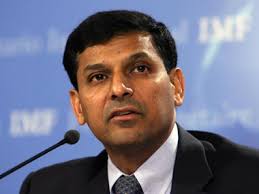RoofandFloor Bureau
As expected, the Reserve Bank on Tuesday cut its policy interest rate by 0.25% – the lowest since January 2011 – and said that it will ensure lenders pass on the be nefits of lower interest rates to borrowers. RBI Governor Raghuram Rajan said the reduction in policy rate will strengthen growth. “Borrowing is now significantly cheaper and will continue to get so,” he said.
nefits of lower interest rates to borrowers. RBI Governor Raghuram Rajan said the reduction in policy rate will strengthen growth. “Borrowing is now significantly cheaper and will continue to get so,” he said.
Mr Rajan discussed other measures like reducing the policy rate corridor to 0.50% from the previous 1% resulting in the reverse repo rate increasing by 25 basis points to 6%. Also, the RBI has said that its monetary policy will continue to take an “accommodative” stance raising hopes of a further cut later in 2016 if inflation continues to remain benign. The Cash Reserve Ratio (CRR) remains unchanged. Statutory Liquidity Ratio (SLR) of scheduled banks has been cut by 25 basis points from 21.5% to 21.25% of Net Demand and Time Liabilities.
RBI retained its GDP growth forecast at 7.6% though maintained that monsoons, policy transmissions, trajectory of inflation and consumption boost due to implementation of the 7th Pay Panel recommendations will determine future policy changes.
Rajan again called on the banks to transmit monetary liquidity to borrowers. He said the banks were reluctant to pass on the cuts complaining of lack of liquidity; with the new cuts in lending rates to banks, banks must introduce rate cuts for borrowers in the next few months.
Mr Rajan also said the Government’s move to amend the RBI Act to create a fiscal policy committee will lend more credibility to the policy.
The stock market and corporate India seems unenthusiastic of the move as they were keen on a larger cut. The BSE Index (Sensex) was down by 300 points. The RBI said it was aiming to bring consumer inflation down to 5% by March 2017. (It was 5.18% in February 2016.)
Terms to know
- Repo rate is the rate at which the RBI lends to banks.
- Reverse repo rate is the rate at which banks can park excess funds with the RBI.
- CRR and SLR are percentage of liabilities that banks have to hold in cash and liquid assets respectively.
Looking for a home in India? RoofandFloor now has irresistible listings from the city. Find your perfect home here.




